by Amineddoleh & Associates LLC | Feb 20, 2024 |
The Biden-Harris administration released Executive Order on the Safe, Secure, and Trustworthy Development and Use of Artificial Intelligence on Oct 30, 2023. The order directs governmental agencies to use eight policies and principles (listed on the left) to drive responsible AI use and development. Additionally, the order creates opportunities for private organizations, members of academia, international allies, and civil society to voluntarily adopt these principles.

Artwork from Refik Anadol’s exhibition Unsupervised. Anadol used artificial intelligence to interpret and transform more than 200 years of art at MoMA. Image via MoMA.
“AI” Defined
The order defines “artificial intelligence” or “AI” as “a machine-based system that can, for a given set of human-defined objectives, make predictions, recommendations, or decisions influencing real or virtual environments.” 15 U.S.C. 9401(3). This is a purposefully broad definition of AI and is not limited to generative AI systems.

AI-generated cubist artwork. Subversive Pink by Abstrix. Image via artaigallery.com.
Policies & Principles
The order directs governmental agencies to use eight policies and principles to drive AI use and development. These policies and principles are:
- Ensuring new standards for AI safety and security
- Protecting privacy
- Advancing equity and civil rights
- Standing up for consumers, patients, and students
- Supporting workers
- Promoting innovation and competition
- Advancing international cooperation
- Advancing the responsible and effective federal government use of AI

AI-generated floral artwork. Deadly Seaweeds by Latebloomr. Image via artaigallery.com.
The Basics
Recurring themes in the order are transparency and responsibility. The directive repeatedly instructs organizations to regularly evaluate their existing AI-related risks, develop organizational AI-management practices, and promote disclosure and transparency procedures across sectors. The directive also suggests that all users, developers, and vendors of AI-enabled technology be prepared for forthcoming AI-related guidance and legislation from federal agencies, state and local governments, and federal legislative bodies.

AI assistants are trending. Rabbit personal AI-powered companion. Image via rabbit.tech.
To Whom Does the Order Apply?
At present, the order is binding on federal agencies (with the exception of independent agencies). However, the order addresses AI risks and benefits at all stages of the AI-supply chain: development, procurement, and deployment. As a result, any private sector organization that does business with a federal agency should adhere to the order’s policies and principles. Organizations that are not directly impacted may still want to adhere to the policies and principles. Future AI governance will be informed by the evolving industry standards and best practices. Those who voluntarily abide by these policies and principles will have an advantage against those who are not proactive when new laws are not proactive when new laws are inevitably passed.

AI-generated cubist artwork. Finite Maze by Abstrix. Image via artaigallery.com.
Takeaways
This landmark order establishes new standards for AI safety and security. It aims to harness the promise of AI, while mitigating its risks to privacy and equity and civil rights.
As AI systems continue to be developed and introduced into the stream of commerce, the industry standards that evolve from this order will likely also apply to private organizations that incorporate AI or use third-party vendors’ AI-enabled services. These services may take the form of services used to aid in business, administration, hiring, and/or marketing purposes. As an example, cultural institutions should anticipate forthcoming AI-enabled services to include curation, record-keeping, artist exhibitions, and to aid in visitor engagement and experience.
To ensure your organization is in compliance with these policies and principles, consider a consultation with our firm.
For a printable fact sheet, click here.
by Amineddoleh & Associates LLC | Nov 6, 2023 |
Monday morning did not come easily for art lovers this week. Heartbreaking news broke early Monday that the glass to the infamous Rokeby Venus by Diego Velazquez was intentionally smashed. The culprits were taking part in a climate protest organized by Just Stop Oil (“JSO”).
Our firm wrote about JSO’s past string of protests here. We also have written about the mysterious Rokeby Venus – and its purported ability to drive viewers mad – here. Check both posts out to obtain context for this recent attack.
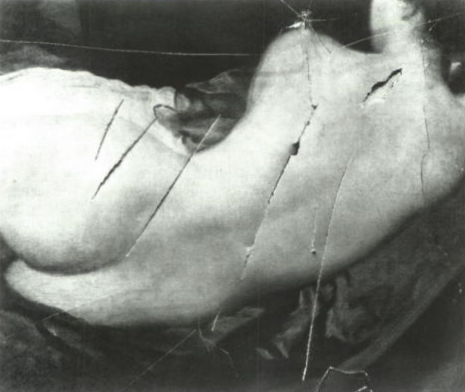
The slashed Rokeby Venus. Image via artinsociety.com.
It is odd that the painting at the heart of this strange, unsound attack was the alluring Rokeby Venus. Perhaps the same mysterious, deluded forces that have caused past owners and viewers to lose their faculties were at play?
JSO states that this piece was specifically selected – but not for its superstitions. Instead, JSO claims an arguably logical connection for choosing this painting for destruction. As JSO explained in a public statement on Nov.6th, “Women did not get the vote by voting [reference the 1914 attack by women’s rights activist Mary Richardson], it is time for deeds not words.”
JSO continued: “It is time to Just Stop Oil. Politics is failing us. It failed women in 1914 and it is failing us now. New oil and gas will kill millions. If we love art, if we love life, if we love our families, we must Just Stop Oil.”
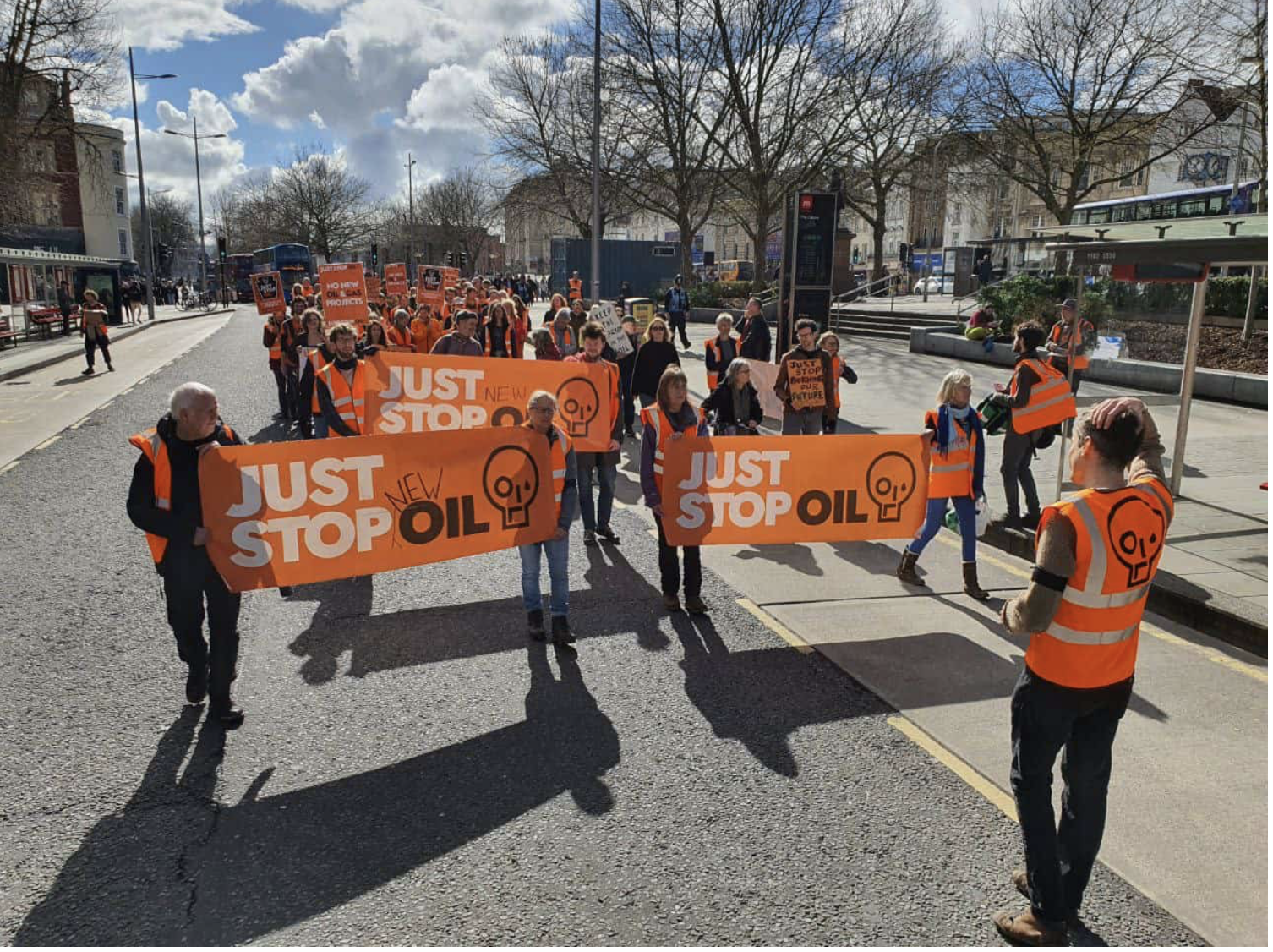
JSO climate protestors in an outdoor demonstration. Image via juststopoil.org
The Met Police thought otherwise. The two culprits were arrested for causing criminal damage to the work. It’s safe to say that people in the art industry feel that these climate-driven protests have gone too far. Prior to this protest, JSO’s demonstrations have been merely superficial (and carefully planned as to not cause permanent damage). However, real damage was done this time.
Smashing the glass sets a new – and dangerous – precedent for possible protests in museums worldwide. Criminal-level damage to precious, irreplaceable piece of art and cultural heritage risks destroying crucial pieces of global history.
Our firm sincerely hopes that JSO will find new mediums through which to express their message. We encourage JSO to engage in productive conversations with politicians and global oil producers – and to leave the work of poor Mr. Velazquez (and his contemporaries) out of it.
by Amineddoleh & Associates LLC | Jul 21, 2023 |

Leila has been recognized by Chambers & Partners for her work in art and cultural property law. Image via Chambers & Partners.
Amineddoleh & Assoc., LLC is proud to announce that our firm’s founder has been listed for the second consecutive year by Chambers & Partners in the latest edition of its High Net Worth Guide for her accomplishments in Art and Cultural Property Law.
Chambers indicated that Leila “is very active in this space and in the litigation area. She has a lot of expertise in the cultural property space. . . a great person in this area.” A source for Chambers went on to say, “She impresses me. She is very practically minded and has a great courtroom manner.”
We are pleased to see our founder recognized in the 2023 HNW Guide rankings for the second consecutive year. These rankings reflect not only the quality of the services our firm provides for our clients, but also our team’s fundamental commitment to providing the highest level of service to our clients.
We extend our sincerest thanks to our clients and colleagues for their confidence in our firm and in recognition of our founder’s work and expertise.
Congrats Leila!
View the ranking below:
Amineddoleh & Assoc., LLC is a premier art law practice based in NYC that advises domestic and international collectors, art dealers, galleries, artists, museums and other cultural institutions.
by Amineddoleh & Associates LLC | Dec 14, 2022 |
In this annual newsletter, Amineddoleh & Associates is pleased to share some major developments that took place at the firm and in the art world during 2022.
LITIGATION AND SETTLEMENT UPDATES
The “Goodwill” Marble Bust

The Marble Bust looted during WWII that was found in Texas and will be returned to Germany
Possibly the most talked about art law matter of the year was the return of an ancient marble bust to Germany. The 2,000-year-old artifact likely originated from Rome, but it was acquired by Bavarian King Ludwig I and then placed in a German museum from where it was looted during World War II. Our client, Laura Young, bought it at a local goodwill shop and ultimately returned it to Germany. It was an honor to advise her and work with her to negotiate the internationally celebrated return.
Copyright Infringement Lawsuit
At the start of the year, we filed a litigation in Iowa on behalf of a muralist, Chris Williams. His work was featured in an advertisement that aired during the Super Bowl. We are currently representing him in a lawsuit for copyright and a violation of his moral rights on the Visual Artists Rights Act.
ART & IP NEWS
One of our favorite things about the art market is that there is always something exciting happening in the art world. Some of our most popular blog posts from this year are found below.
Celebrities and Fossil Collecting
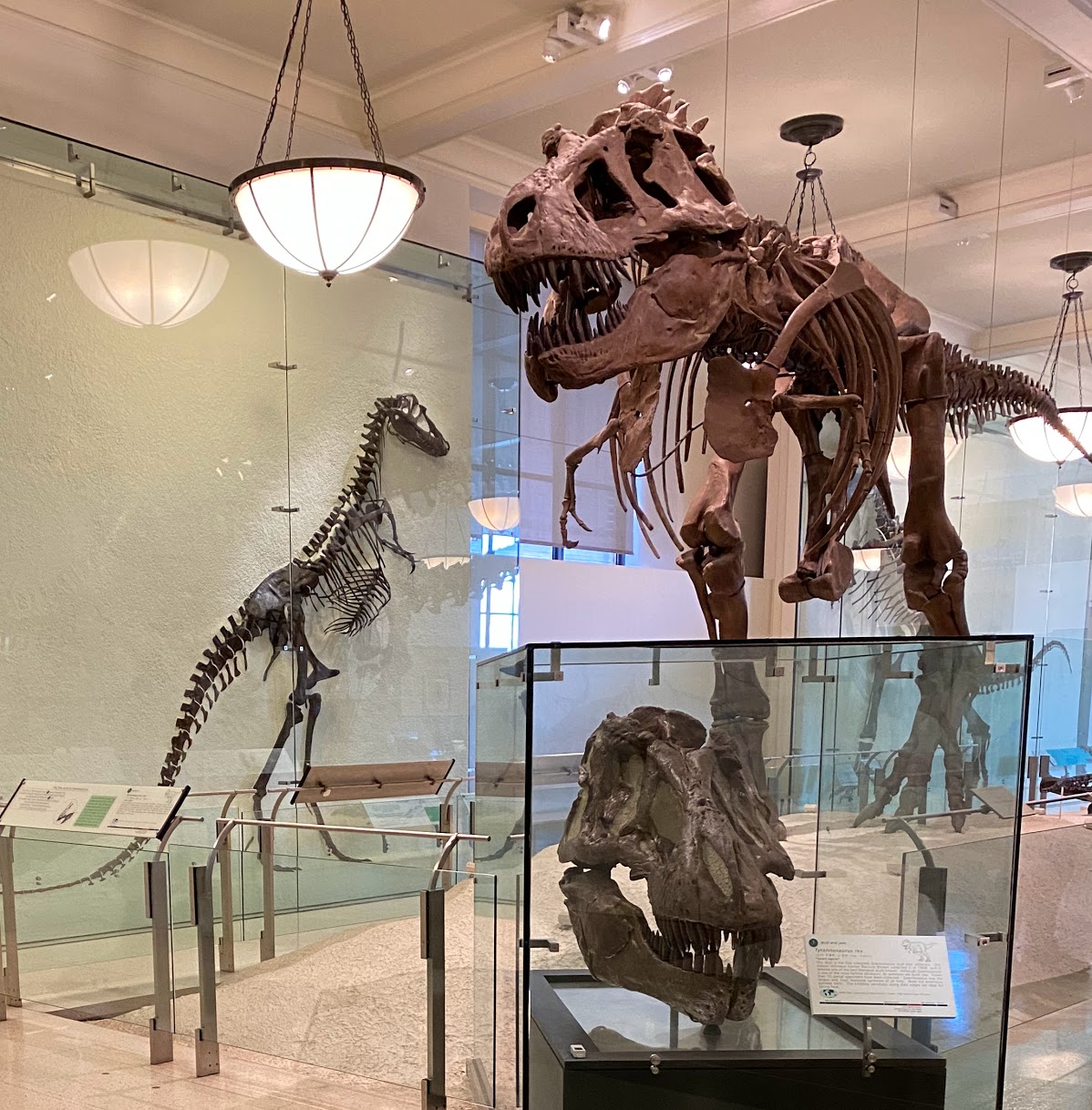
Skeletons in the American Museum of Natural History
In this blog post, our firm examined legal matters involving dinosaur fossils and skeletons, including purchases made by Nicolas Cage, Leonardo DiCaprio, and The Rock. Auction houses have faced growing interest in buyers seeking dinosaur bones. The sales have gotten a lot of attention, perhaps due to the trend of major celebrities making large, public bids for the pieces. As a result of the publicity, countries around the world from which fossils are illegally excavated have presented auction houses with ownership claims, based on their country’s property laws. Copyright law was also an issue for auction houses selling dinosaur skeletons this year because skeletons that are partly comprised of replica bones may come with intellectual property rights in the manufactured pieces.
Fashion Law and Protecting Brands
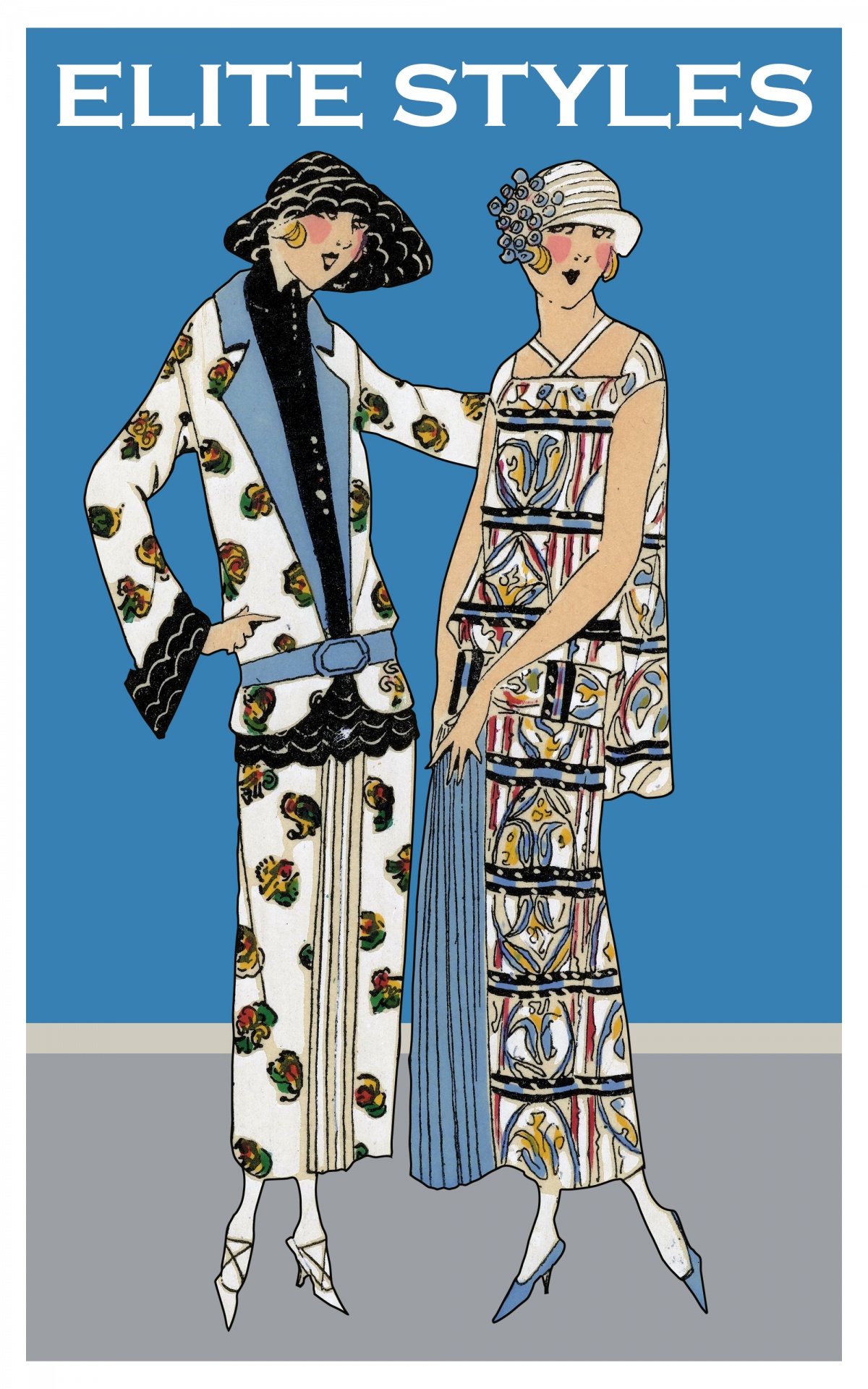 When does the law protect fashion brands? And what is the cost to other artists? Our firm answered these questions in this posts inspired by the Fall 2022 Fashion Weeks taking place around the world. Prominent fashion designers have been known to incorporate logos of other brands into their designs, often as a part of social commentary. Even where artistry is the intent behind the repurposed logo, these designers face financially devastating intellectual property claims from major the brands and companies who own the rights to the logo. Our firm considered how to balance protecting consumers from consumer confusion with giving designers the artistic liberty to create fashion that sparks social commentary. Read more on our website.
When does the law protect fashion brands? And what is the cost to other artists? Our firm answered these questions in this posts inspired by the Fall 2022 Fashion Weeks taking place around the world. Prominent fashion designers have been known to incorporate logos of other brands into their designs, often as a part of social commentary. Even where artistry is the intent behind the repurposed logo, these designers face financially devastating intellectual property claims from major the brands and companies who own the rights to the logo. Our firm considered how to balance protecting consumers from consumer confusion with giving designers the artistic liberty to create fashion that sparks social commentary. Read more on our website.
New York Raises Holocaust Awareness Through New Law

Gustav Klimt’s Woman in Gold
New York State now requires museums to post which artworks on display have links to the Holocaust. The New York bill, which was signed into law on August 10, 2022, accompanied two other Holocaust related bills aimed to combat rising reports of antisemitism. Our firm revisited the difficulty of proving provenance for items acquired during the Holocaust and shortly following WWII. The restitution of these works to families from which the pieces were stolen is incredibly healing.Unfortunately, such claims for the return of priceless works of art often have to overcome enormous legal hurdles, such as the difficulty of proving provenance in court and FSIA claims brought by countries who now claim possession. Read more on our website.
LAW FIRM UPDATES AND EVENTS
New Team Members
Our firm welcomed two new members to join our team, Yelena Ambartsumian and Maria Cannon. Yelena joins the firm as Counsel, while Maria joins us as an associate. We are proud to have Yelena and Maria as members of our team, and we wish them both a warm welcome.
Firm Founder Listed by Chambers
This year, firm founder Leila A. Amineddoleh was recognized by Chambers and Partners High Net Worth Guide for her work in Art and Cultural Property Law. The publication named Leila “a brilliant attorney,” and “a go-to for cultural property matters.” The publication also remarked on her passion for art law and her wealth of experience in the field. Read more here.
Art Law Conferences
Congratulations to our firm’s founder Leila A. Amineddoleh, who successfully chaired the 14th Annual NYCLA Art Law Institute, one of the most anticipated events of the year. Earlier in the year, in March, Leila presented the keynote speech at Yale University’s conference “Dura-Europos: Past, Present, and Future.” The conference focused on the systematic looting of Dura-Europos that took place during the Syrian civil war and during prior millennia. Leila presented on the history of cultural heritage looting and modern efforts to prevent such plunder. Read more about the conference here.
Leila was also a speaker at the Salmagundi Club, one of the oldest arts organizations in the U.S. Her other speaking engagements included moderating a panel for Art Appraisers’ Association Art Law Day and for Fordham’s Intellectual Property Law Journal’s 30th Annual Symposium, “Duplicate, Decolonize, Destroy: Current Topics in Art and Cultural Heritage Law.” In addition, she spoke at conferences hosted by Cardozo School of Law and Notre Dame School of Law. At Cardozo School of Law, Leila spoke on a panel at a symposium discussing cultural property ownership. Read more here. At Notre Dame’s Journal of International and Comparative Law Symposium, she served as panelist at the symposium, “International and Comparative Approaches to Culture”, and discussed antiquities disputes and repatriation of cultural heritage.
Associate Claudia Quinones presented on the “What’s New in Art Law?” panel at the 14th Annual NYCLA Art Law Institute. Her presentation covered title and ownership disputes, new technologies, and climate change activism in the art world. Details about the conference can be found here.
Yelena’s speaking engagements included Fordham Law School’s 30th Annual Intellectual Property Law Journal Symposium as a panelist on “Erased: Protecting Cultural Heritage in Times of Armed Conflict.” She also was a panelist at American University of Armenia’s Center for Truth and Justice Inaugural International Conference, “Cultural Heritage at Stake: How to Preserve, Mitigate Damage, and Punish Destruction.” Read more about the conference here.
IN THE PRESS
Leila appeared in the New York Times a number of times this year, in addition to Artnet, The Art Newspaper, the Observer, the Washington Post, USA Today, People Magazine, and Town + Country Magazine. She discussed a variety of topics, including the art market, cultural heritage disputes, Nazi-looted art, intellectual property disputes, and art collecting practices. Leila also appeared on WPIX-NY and in a number of podcasts.
CLIENTS AND REPRESENTATIVE MATTERS
Sculpture Garden Commission at the Smithsonian Institution
We are very proud to have served as legal counsel to famed artist Hiroshi Sugimoto for a number of his commissions, including his highly anticipated sculpture garden at the Hirshhorn Museum, part of the Smithsonian Institution.
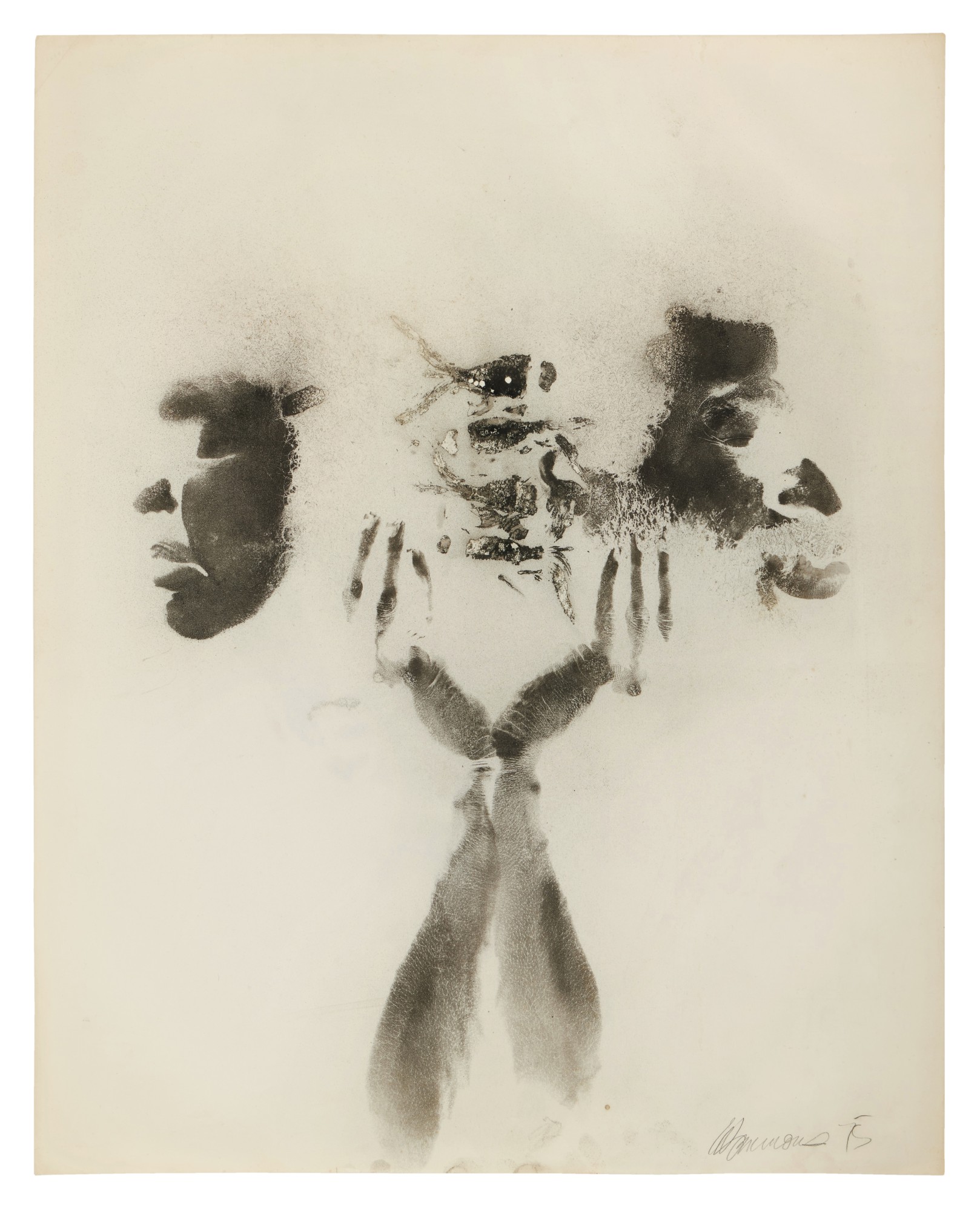 Auction Sales
Auction Sales
We worked with a number of clients to assist them with consigning art for sale at auction. One of our clients is the collecting family that consigned three works by David Hammons for the Sotheby’s Contemporary Evening Auction and one work at the Contemporary Curated sale earlier in the spring. Sotheby’s touted these works and their provenance, after the paintings remained with our clients for nearly five decades. All four of the works performed well, with two of them selling for above their high estimates.
Trademark Clients
We continue working with brands, artists, and companies by advising and serving as trademark prosecutors. Included among our clients are luxury watch brands, fragrance companies, and musicians, including multi-platinum songwriter and produced Jonas Jeberg.
Advising Art Market Players on New Platforms
While we often work with traditional art market participants (including artists, collectors, foundations, auction houses, museums, art advisors, and art experts), we are also happy to be at the forefront of the art and cultural world. As new art platforms and technologies develop, we are pleased to work with exciting online galleries, NFT platforms, novel art collecting exchanges, and artists exploring new media. We look forward to continue cutting edge work in the art sector.
On behalf of Amineddoleh & Associates, we wish you a happy and healthy holiday season and a wonderful and prosperous new year.
by Amineddoleh & Associates LLC | Oct 4, 2022 |
The following guest blog post was written by Andrea Martín Alacid.
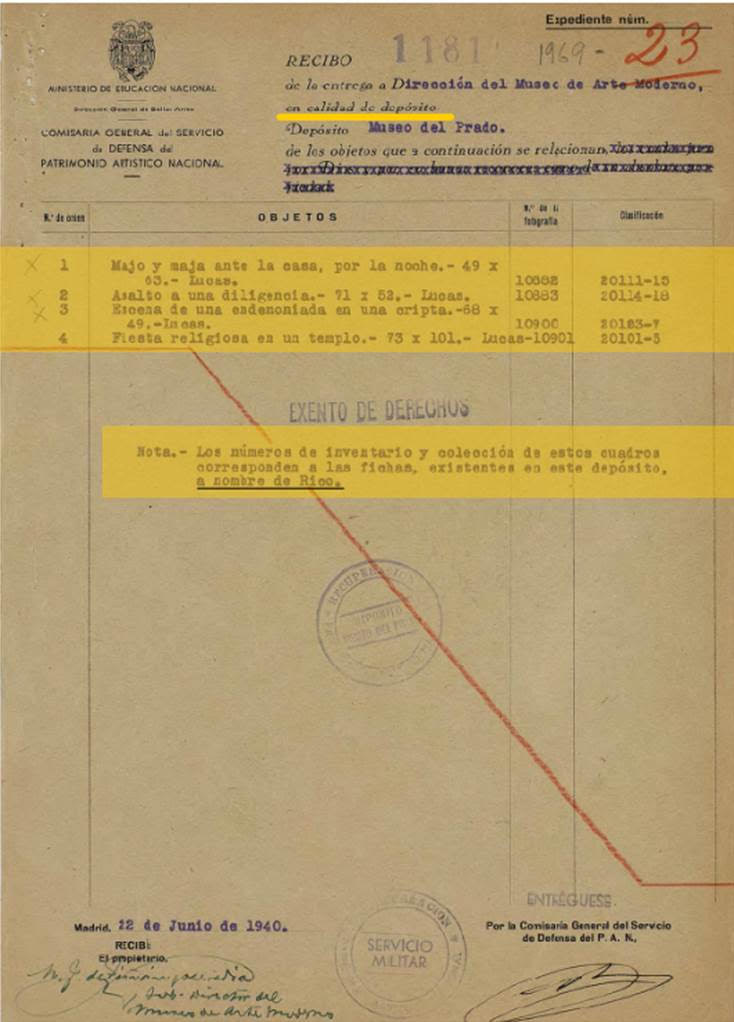 Following other European museums such as the Musée du Louvre in Paris and the British Museum in London, Museo Nacional del Prado (the Prado) in Madrid recently announced a new initiative. It would carry out an ex officio review of its collection to identify works of art seized during the Spanish Civil War and Franco’s regime by the Board of Seizure and Protection of Artistic Heritage founded in 1936 (and known as the Board of Artistic Treasure from 1937 onwards). Following the museum’s initiative, 25 documented works that were never returned to their rightful owners have been identified so far, but there is no doubt that this number could increase.
Following other European museums such as the Musée du Louvre in Paris and the British Museum in London, Museo Nacional del Prado (the Prado) in Madrid recently announced a new initiative. It would carry out an ex officio review of its collection to identify works of art seized during the Spanish Civil War and Franco’s regime by the Board of Seizure and Protection of Artistic Heritage founded in 1936 (and known as the Board of Artistic Treasure from 1937 onwards). Following the museum’s initiative, 25 documented works that were never returned to their rightful owners have been identified so far, but there is no doubt that this number could increase.
In response, the Prado has commissioned Professor Emeritus Arturo Colorado Castellary to lead a research project at the museum with the aim of clarifying the provenance of some of its works. His research will examine the background and context in which the works entered the Prado’s collections, in order to promote transparency and (if necessary and in compliance with all legal requirements) return them to their rightful owners. Professor Colorado is expected to share the first results of his research in early 2023.
 Following the Prado’s announcement and after a great deal of research, this initiative has already borne fruit. The heirs of Pedro Rico López (a lawyer and Republican politician, as well as the mayor of Madrid in the 1930s), have begun the restitution process for the at least 25 paintings thus far. It was not until February 2021 that López’s grandchildren first learned about the whereabouts of their family’s artworks. The works were seized during the post-war period. The heirs eventually learned of the seized assets from an article, El botín del patrimonio español que el franquismo repartió en la posguerra (The spoils of Spanish heritage that Franco´s regime distributed in the post-war period), published in the Spanish national newspaper ABC, after Arturo Colorado’s research came to light . The heirs retained Spanish art law firm Caliope Art Law Boutique, founded by Laura Sánchez Gaona, to set forth their claim.
Following the Prado’s announcement and after a great deal of research, this initiative has already borne fruit. The heirs of Pedro Rico López (a lawyer and Republican politician, as well as the mayor of Madrid in the 1930s), have begun the restitution process for the at least 25 paintings thus far. It was not until February 2021 that López’s grandchildren first learned about the whereabouts of their family’s artworks. The works were seized during the post-war period. The heirs eventually learned of the seized assets from an article, El botín del patrimonio español que el franquismo repartió en la posguerra (The spoils of Spanish heritage that Franco´s regime distributed in the post-war period), published in the Spanish national newspaper ABC, after Arturo Colorado’s research came to light . The heirs retained Spanish art law firm Caliope Art Law Boutique, founded by Laura Sánchez Gaona, to set forth their claim.
As a result of the research carried out by the due diligence department of the law firm, along with the information provided by the Spanish General Directorate of Fine Arts, led by Isaac Sastre de Diego, the current location of 23 of the family’s artworks in various Spanish museums was discovered. In September 2021, members of the Caliope Art Law Boutique accompanied one of the heirs to identify the three Eugenio Lucas paintings in the custody of the Prado. The heirs had previously never seen these works in person. Although this was just a first step, it was an emotional moment for all those present, including Andrés Úbeda de los Cobos (Deputy Director of Conservation and Research) and Carlos Chaguaceda (Director of Communications) working on behalf of the Prado. While viewing the three paintings, it was noted that the Prado kept the Seizure Board’s labels intact. This is most valuable as the label recorded the name of the works’ rightful owner, Pedro Rico.
 The paintings currently held by the Prado, together with the other works documented, have been in the possession of different administrations for a number of decades. Under the law of adverse possession in the Spanish Civil Code, the museums are considered the legal owners. However, the State Attorney General’s Office has recently reevaluated this doctrine in the context of plundered works of art. As a result, the first restitution of a work of art seized during the Civil War took place last month. The recipients are the family of Ramón de la Sota Chalbaud, and the work in question is Portrait of a Young Gentleman by Cornelis can der Voort. This landmark restitution has paved the way for new cases to come.
The paintings currently held by the Prado, together with the other works documented, have been in the possession of different administrations for a number of decades. Under the law of adverse possession in the Spanish Civil Code, the museums are considered the legal owners. However, the State Attorney General’s Office has recently reevaluated this doctrine in the context of plundered works of art. As a result, the first restitution of a work of art seized during the Civil War took place last month. The recipients are the family of Ramón de la Sota Chalbaud, and the work in question is Portrait of a Young Gentleman by Cornelis can der Voort. This landmark restitution has paved the way for new cases to come.
In short, there is no doubt that this initiative by the Prado, together with the re-evaluation of adverse possession, is a crucial and significant step in the restitution procedures of looted cultural heritage in Spain, which unfortunately lack a specific legal framework at this time. It is likely that this framework will be developed in the near future, and we eagerly await ongoing developments.
We congratulate our esteemed colleagues and friends in Spain for their remarkable work fighting for justice and paving the way for equitable restitutions in Europe.










 When does the law protect fashion brands? And what is the cost to other artists? Our firm answered these questions in this posts inspired by the Fall 2022 Fashion Weeks taking place around the world. Prominent fashion designers have been known to incorporate logos of other brands into their designs, often as a part of social commentary. Even where artistry is the intent behind the repurposed logo, these designers face financially devastating intellectual property claims from major the brands and companies who own the rights to the logo. Our firm considered how to balance protecting consumers from consumer confusion with giving designers the artistic liberty to create fashion that sparks social commentary. Read more on our
When does the law protect fashion brands? And what is the cost to other artists? Our firm answered these questions in this posts inspired by the Fall 2022 Fashion Weeks taking place around the world. Prominent fashion designers have been known to incorporate logos of other brands into their designs, often as a part of social commentary. Even where artistry is the intent behind the repurposed logo, these designers face financially devastating intellectual property claims from major the brands and companies who own the rights to the logo. Our firm considered how to balance protecting consumers from consumer confusion with giving designers the artistic liberty to create fashion that sparks social commentary. Read more on our 

 Auction Sales
Auction Sales Following other European museums such as the Musée du Louvre in Paris and the British Museum in London, Museo Nacional del Prado (the Prado) in Madrid recently announced a new initiative. It would carry out an ex officio review of its collection to identify works of art seized during the Spanish Civil War and Franco’s regime by the Board of Seizure and Protection of Artistic Heritage founded in 1936 (and known as the Board of Artistic Treasure from 1937 onwards). Following the museum’s initiative, 25 documented works that were never returned to their rightful owners have been identified so far, but there is no doubt that this number could increase.
Following other European museums such as the Musée du Louvre in Paris and the British Museum in London, Museo Nacional del Prado (the Prado) in Madrid recently announced a new initiative. It would carry out an ex officio review of its collection to identify works of art seized during the Spanish Civil War and Franco’s regime by the Board of Seizure and Protection of Artistic Heritage founded in 1936 (and known as the Board of Artistic Treasure from 1937 onwards). Following the museum’s initiative, 25 documented works that were never returned to their rightful owners have been identified so far, but there is no doubt that this number could increase. Following the Prado’s announcement and after a great deal of research, this initiative has already borne fruit. The heirs of Pedro Rico López (a lawyer and Republican politician, as well as the mayor of Madrid in the 1930s), have begun the restitution process for the at least 25 paintings thus far. It was not until February 2021 that López’s grandchildren first learned about the whereabouts of their family’s artworks. The works were seized during the post-war period. The heirs eventually learned of the seized assets from an article, El botín del patrimonio español que el franquismo repartió en la posguerra (The spoils of Spanish heritage that Franco´s regime distributed in the post-war period), published in the Spanish national newspaper ABC, after Arturo Colorado’s research came to light . The heirs retained Spanish art law firm
Following the Prado’s announcement and after a great deal of research, this initiative has already borne fruit. The heirs of Pedro Rico López (a lawyer and Republican politician, as well as the mayor of Madrid in the 1930s), have begun the restitution process for the at least 25 paintings thus far. It was not until February 2021 that López’s grandchildren first learned about the whereabouts of their family’s artworks. The works were seized during the post-war period. The heirs eventually learned of the seized assets from an article, El botín del patrimonio español que el franquismo repartió en la posguerra (The spoils of Spanish heritage that Franco´s regime distributed in the post-war period), published in the Spanish national newspaper ABC, after Arturo Colorado’s research came to light . The heirs retained Spanish art law firm  The paintings currently held by the Prado, together with the other works documented, have been in the possession of different administrations for a number of decades. Under the law of adverse possession in the Spanish Civil Code, the museums are considered the legal owners. However, the State Attorney General’s Office has recently reevaluated this doctrine in the context of plundered works of art. As a result, the first restitution of a work of art seized during the Civil War took place last month. The recipients are the family of Ramón de la Sota Chalbaud, and the work in question is Portrait of a Young Gentleman by Cornelis can der Voort. This landmark restitution has paved the way for new cases to come.
The paintings currently held by the Prado, together with the other works documented, have been in the possession of different administrations for a number of decades. Under the law of adverse possession in the Spanish Civil Code, the museums are considered the legal owners. However, the State Attorney General’s Office has recently reevaluated this doctrine in the context of plundered works of art. As a result, the first restitution of a work of art seized during the Civil War took place last month. The recipients are the family of Ramón de la Sota Chalbaud, and the work in question is Portrait of a Young Gentleman by Cornelis can der Voort. This landmark restitution has paved the way for new cases to come.